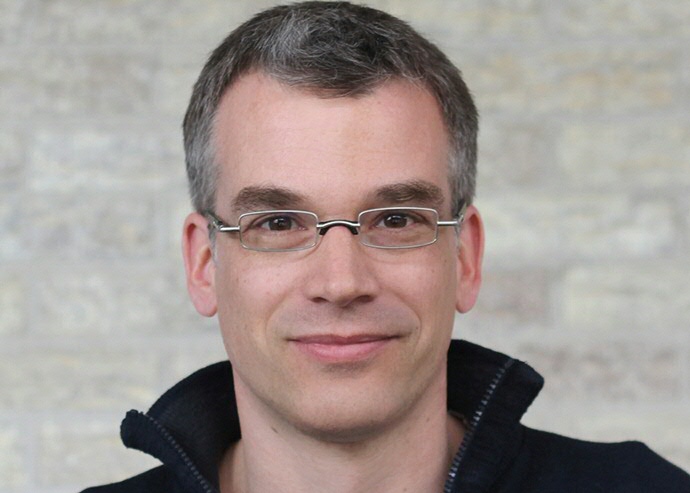Waarom bacteriën in slaap vallen

Bacteriën zijn echte overlevers, die soms zelfs een aanval met antibiotica kunnen weerstaan. Sommige cellen overleven die omdat ze resistentiegenen bezitten, terwijl andere – de zogeheten volhouders – zich terugtrekken in een soort slaaptoestand waarin ze veilig zijn voor de antibiotica. Er is niet veel bekend over deze volhouders, maar nu hebben onderzoekers van de Rijsuniversiteit Groningen met collega’s van de universiteit van Bazel de slaaptoestand beschreven. Hun resultaten zijn op 21 september 2016 verschenen in het tijdschrift Molecular Systems Biology.
Sommige infecties keren weer terug na behandeling met antibiotica. De zogeheten ‘volhouders’ onder de bacteriën zijn hier voor een groot deel verantwoordelijk voor. Dit is een probleem. Allereerst omdat de behandeling dus niet werkt, maar ook omdat herhaalde toediening van antibiotica het ontstaan van resistentie kan veroorzaken bij de overlevende cellen.
Diepe slaap
‘Er zitten doorgaans maar heel weinig volhouders in een populatie bacteriën. Dat maakte het lastig te onderzoeken waarom ze niet doodgaan door de antibiotica. Maar inmiddels weten we meer’, zegt Matthias Heinemann, hoogleraar Molecular Systems Biology aan de RUG.
De omslag kwam een paar jaar geleden, deels door werk uit zijn eigen lab. Heinemann en zijn collega’s ontdekten dat een plotselinge verandering in de voedselbron bacteriën kan dwingen om in de ‘volhoudersstand’ te schieten. Door de verandering schakelt een flink percentage van alle bacteriecellen zichzelf min of meer uit. Je kunt zeggen dat ze in een diepe slaap vallen.
Laag pitje
In het nieuwste onderzoek hebben Heinemann en zijn team de verandering in stofwisseling en eiwitconcentraties gemeten in deze cellen. ‘Eerder was de overtuiging dat volhouders feitelijk inactieve cellen waren die zichzelf helemaal hadden uitgeschakeld, zonder specifieke kenmerken.’ De nieuwe resultaten laten zien dat bij volhouders de stofwisseling op een heel laag pitjes staat, net voldoende om te overleven. De cellen zijn aangepast om hun kans op overleven maximaal te maken.
Ineenstorten stofwisseling
Het team heeft deze resultaten gebruikt om een model te maken dat beschrijft waarom de cellen in zo’n slapende ‘volhouders’ toestand komen. ‘De snelle verandering van voedselbron doet de stofwisseling van de bacterie ineenstorten. Hierdoor kan de cel te weinig voedsel opnemen om de energie te leveren die nodig is voor groei. Dat kan de cel in een vicieuse cirkel brengen die uiteindelijk leidt tot een soort ‘safe mode’, een veilige stand. De stofwisseling draait op een minimaal niveau en de bacterie heeft geen last meer van de antibiotica omdat die doorgaans op groei of stofwisseling aangrijpen.’ Zodra er weer een bruikbare voedselbron aanwezig is, kan de cel de stofwisseling weer aanzwengelen en opnieuw gaan delen.
Nieuw inzicht
Deze nieuwe inzichten gaan in tegen diverse populaire modellen voor het beschrijven van volhouders. Die stellen dat de balans tussen toxines en antitoxines in de bacterie de belangrijkste oorzaak is van de volhoudersstand, maar dat lijkt nu onwaarschijnlijk. In het nieuwe model is het mogelijk dat toxines de stofwisseling van de cel vertragen en zo bijdragen aan het ontstaan van de slaaptoestand. Maar ze vormen slechts een van de vele factoren.
Resistentie voorkomen
De afgelopen paar jaar is de belangstelling voor de ‘volhouders’ sterk toegenomen. ‘Dit is een terrein waaraan momenteel veel onderzoek wordt gedaan in de microbiologie’, zegt Heinemann. Doordat nu bekend is wat de eigenschappen van de volhouders zijn en er een model is dat uitlegt hoe de cellen in de slaapstand raken, heeft Heinemann een grote sprong voorwaarts bewerkstelligt in het begrijpen van deze bijzondere toestand van bacteriën. Heinemann: ‘Ons werk kan nieuwe ideeën opleveren over de behandeling van terugkerende infecties en het voorkomen van het ontstaan van resistentie tegen antimicrobiële middelen.’
Nadere informatie
-
Referentie: Radzikowski JL, Vedelaar S, Siegel D, Ortega AD, Schmidt A, Heinemann M. (2016) Bacterial persistence is an active σS stress response to metabolic flux limitation. Molecular Systems Biology. msb.embopress.org/cgi/doi/10.15252/msb.20166998
-
Contact: prof.dr. Matthias Heinemann, afdeling Molecular Systems Biology, Groningen Biomolecular Sciences and Biotechnology Institute (GBB), Rijksuniversiteit Groningen.
Meer nieuws
-
17 december 2025
Ben Feringa wint Feynmanprijs
-
11 december 2025
Stormachtige planeten en een onverwachtse atmosfeer
